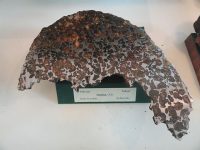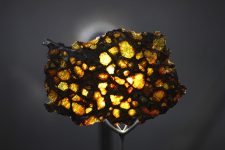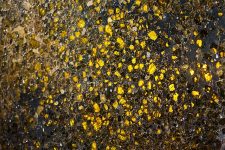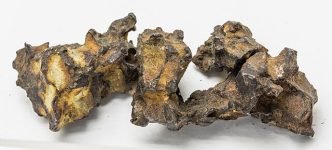Imilac
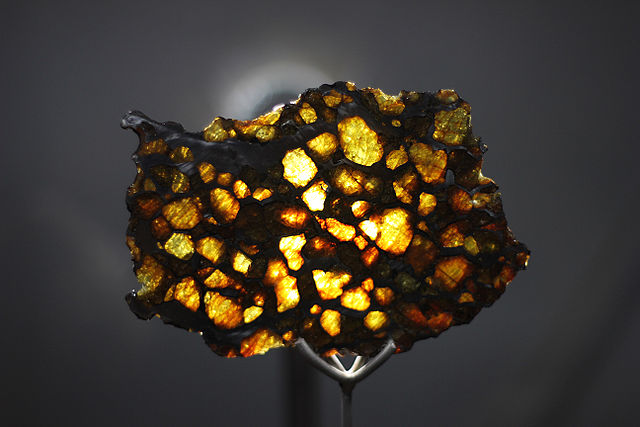
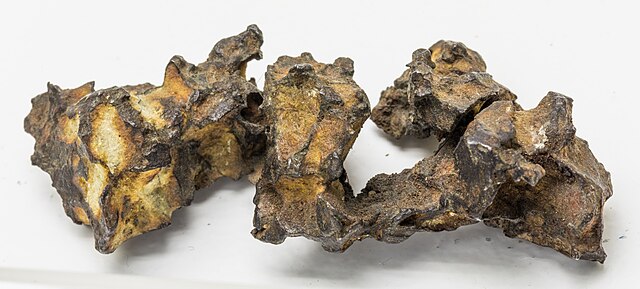
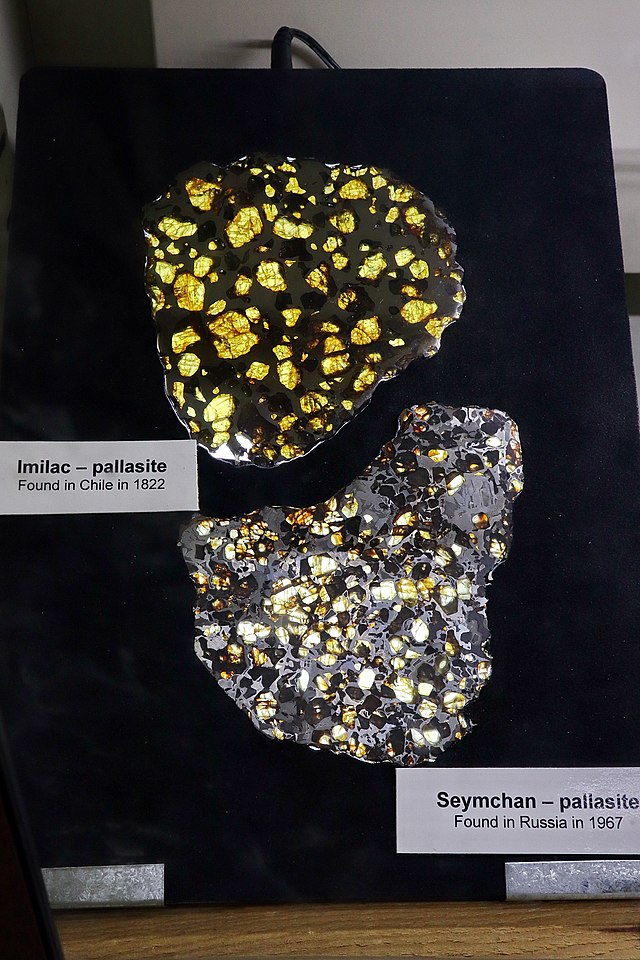
Imilac
The Imilac meteorite is a famous pallasite meteorite that fell in the Atacama Desert of northern Chile. Pallasites are a rare type of stony-iron meteorite known for their beautiful olivine crystals embedded in a metallic matrix. The Imilac meteorite is renowned for its aesthetic appeal and scientific significance, offering insights into the formation and composition of asteroids and the early solar system.
Discovery and History
The Imilac meteorite fell to Earth in prehistoric times, and its first recorded discovery dates back to 1822 by a German explorer named Johann Ritter von Tschudi. It was found in the Atacama Desert, an arid region known for preserving meteorites exceptionally well due to its dry climate.
Recovery and Classification
The recovery of Imilac meteorite fragments involved subsequent expeditions and systematic searches in the Atacama Desert. The meteorite was classified as a pallasite, specifically an ungrouped Main Group pallasite, due to its unique characteristics and composition.
Composition and Structure
Imilac is classified as a stony-iron meteorite, specifically a pallasite, which represents a mixture of silicate minerals (mainly olivine) and metallic iron-nickel alloy. Pallasites are notable for their striking visual appearance, with translucent green-yellow olivine crystals embedded within a shiny metallic matrix.
Olivine Crystals
One of the distinguishing features of Imilac meteorites is the presence of large olivine crystals, also known as peridot. These crystals are formed from magnesium-rich silicate minerals that crystallized as the asteroidal core cooled slowly over millions of years.
Scientific Significance
The Imilac meteorite holds significant scientific value, providing insights into asteroidal processes, the formation of planetary bodies, and the evolution of the early solar system.
Asteroidal Origin
Imilac is believed to have originated from the core-mantle boundary of a differentiated asteroid. Pallasites like Imilac are thought to represent remnants of disrupted planetary embryos or differentiated asteroids that underwent partial melting and differentiation early in the history of the solar system.
Cosmochemical Studies
Scientific studies of Imilac meteorites have contributed to our understanding of cosmochemistry, isotopic dating techniques, and the geochemical evolution of planetary bodies. Isotopic analyses of Imilac have helped scientists determine the age of the solar system and trace the origins of meteoritic materials back to their parent bodies.
Cultural and Collectible Value
Beyond its scientific importance, the Imilac meteorite holds cultural and collectible value, captivating collectors, museums, and enthusiasts worldwide.
Aesthetic Appeal
Imilac meteorites are prized for their aesthetic beauty, with their shimmering metallic surfaces and contrasting olivine crystals. Specimens are often cut and polished to showcase the olivine inclusions, creating stunning displays that highlight the natural artistry of cosmic materials.
